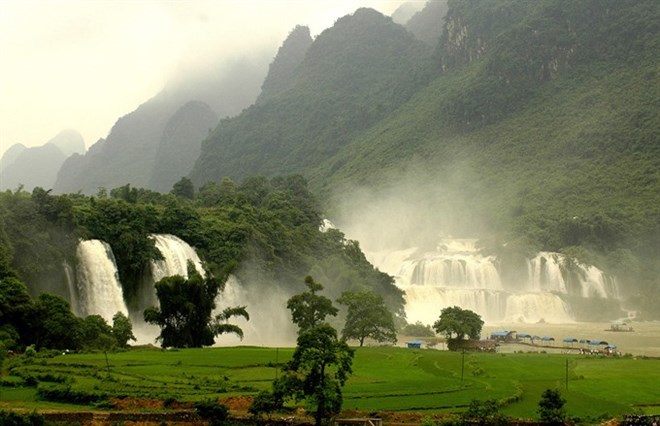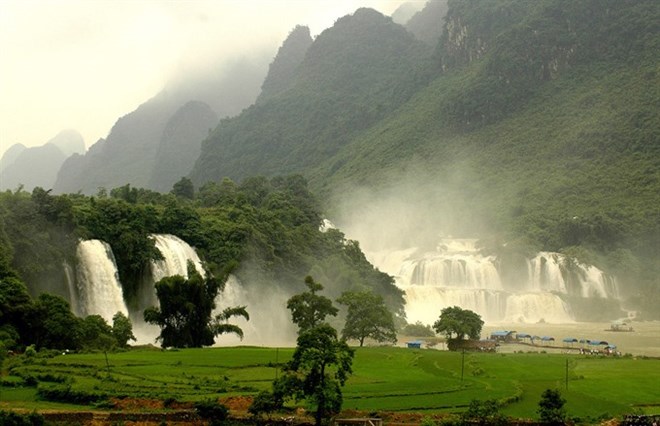
The People’s Committee of Cao Bang province and the Ministry of Construction on August 17 announced master and detailed plans for developing Ban Gioc waterfall tourist site.

Ban Gioc Waterfall (Photo:
VNA)
The announcement aims to
call for investment from enterprises to turn Ban Gioc waterfall tourist site
into a key tourism site of the northern mountainous province and the nation,
contributing to boosting the development of the province and the region.
Under the master plan, approved by the Prime Minister in April this year, the
Ban Gioc waterfall tourist site will cover 1,000ha while the central area of
the site will cover 156.7ha.
Facilities will be also built in the zone to serve tourism, including hotels
and service areas.
The tourist site is expected to welcome approximately 750,000 visitors per year
and have more than 1,000 rooms for tourists by 2020. By 2030, the tourist site
is estimated to receive 1.2 million visitors and have some 1,750 rooms for
visitors.
The central area of the Ban Gioc waterfall tourist site is set to have four
areas including the Ban Gioc waterfall landscape, the landscape along the Quay
Son River, the mountainous forestry landscape ecology and the agricultural
landscape ecology.
Ban Gioc is in Dam Thuy commune, Trung Khanh district, on the border with
China’s Guangxi province. It is
53 metres high and
300 metres wide and has
three levels of smaller waterfalls.
The waterfall is the fourth largest border waterfall in the world and was named
one of the ten most spectacular waterfalls in the world by travel site
Touropia.
In 2016, the tourism site welcomed more than 178,000 visitors.
Source:VNA
A diverse chain of eco-tourism and resort destinations concentrated in Hoa Binh city and the districts of Tan Lac, Da Bac, and Luong Son… Along with the launch of several key high-quality resort tourism projects, these developments have reshaped the landscape and enhanced the appeal of Hoa Binh as a travel destination.
Boasting diverse terrain, a mild climate, and rich natural resources, Cao Phong district is increasingly asserting its place on Vietnam’s tourism map, attracting both domestic and foreign visitors. The district is renowned for its stunning landscapes, majestic mountains, a crystal-clear hydropower lake, and the unique cultural identity of local ethnic groups.
With its pristine landscapes, unique cultural heritage of Muong ethnic minority, and an expanding range of visitor experiences, Tan Lac district of Hoa Binh has fast become a captivating destination for both domestic and international tourists.
Until now, Sung village in Cao Son commune, Da Bac district remains the only Dao ethnic community in Hoa Binh province to develop a community-based tourism model. Beyond its untouched natural landscapes, cultural identity serves as the cornerstone attraction for visitors.
Alongside the diverse cultural identities of the Kinh, Muong, Tay, Thai, Dao, and Mong ethnic people, Hoa Binh province is also renowned as the "capital" of the northwestern Vietnamese cuisine, offering unique and distinctive dishes. At festivals, during Lunar New Year (Tet), or on significant family or community occasions, special dishes are prepared, leaving a lasting impression on visitors.
A Phong Linh (Yellow Tabebuia) flower garden in Thang village, Thach Yen commune, Cao Phong district is currently in full bloom, drawing a large number of visitors.



